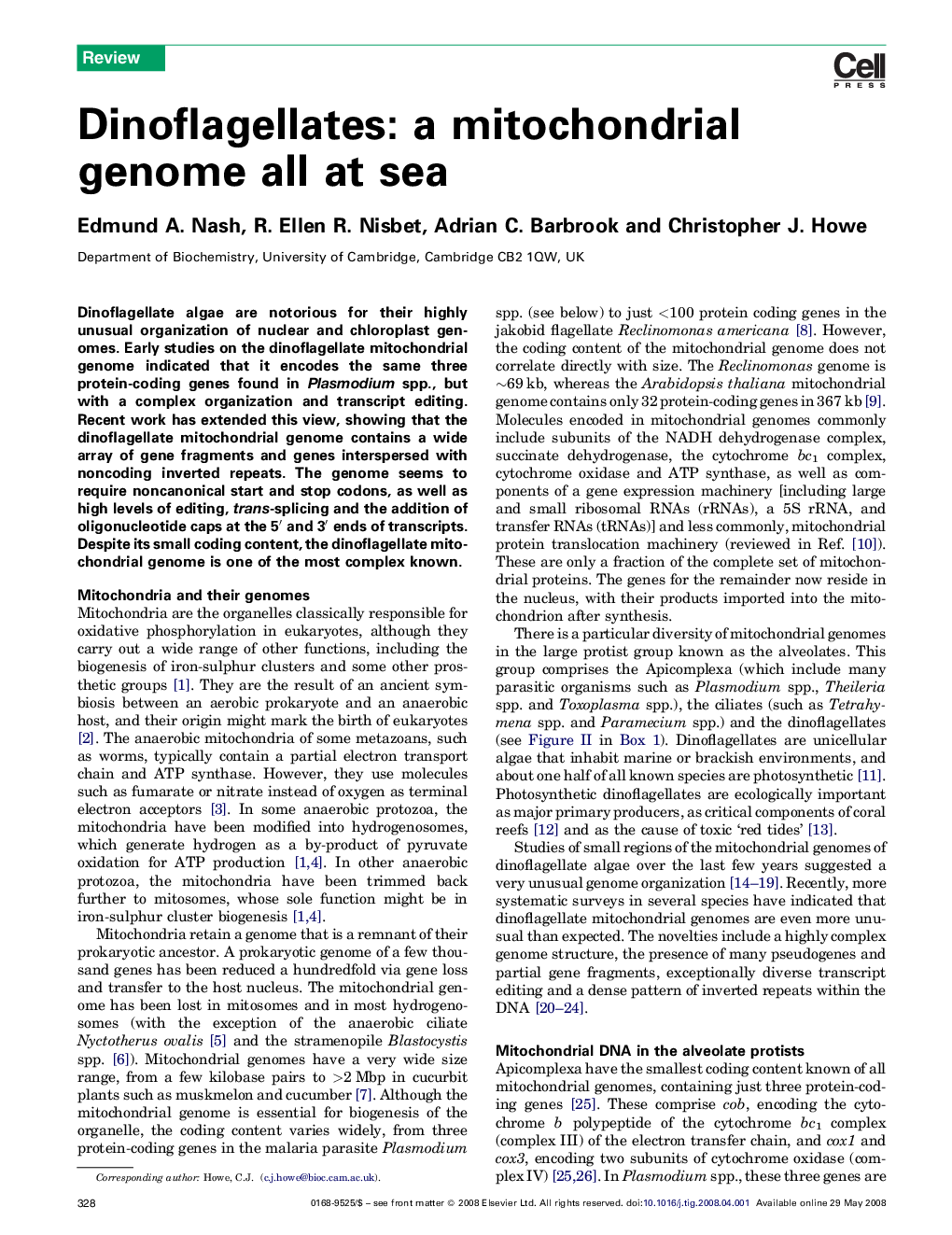| Article ID | Journal | Published Year | Pages | File Type |
|---|---|---|---|---|
| 2825540 | Trends in Genetics | 2008 | 8 Pages |
Dinoflagellate algae are notorious for their highly unusual organization of nuclear and chloroplast genomes. Early studies on the dinoflagellate mitochondrial genome indicated that it encodes the same three protein-coding genes found in Plasmodium spp., but with a complex organization and transcript editing. Recent work has extended this view, showing that the dinoflagellate mitochondrial genome contains a wide array of gene fragments and genes interspersed with noncoding inverted repeats. The genome seems to require noncanonical start and stop codons, as well as high levels of editing, trans-splicing and the addition of oligonucleotide caps at the 5′ and 3′ ends of transcripts. Despite its small coding content, the dinoflagellate mitochondrial genome is one of the most complex known.
